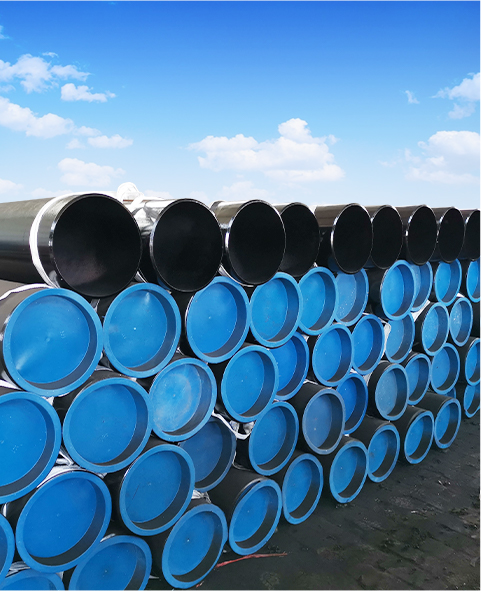-
Cangzhou Yulong Steel Co., Ltd.
-
Phone:
+86 13303177267 -
Email:
admin@ylsteelfittings.com
- English
- Arabic
- Italian
- Spanish
- Portuguese
- German
- kazakh
- Persian
- Greek
- French
- Russian
- Polish
- Thai
- Indonesian
- Vietnamese
- Zulu
- Korean
- Uzbek
- Hindi
- Serbian
- Malay
- Ukrainian
- Gujarati
- Haitian Creole
- hausa
- hawaiian
- Hebrew
- Miao
- Hungarian
- Icelandic
- igbo
- irish
- Japanese
- Javanese
- Kannada
- Khmer
- Rwandese
- Afrikaans
- Albanian
- Amharic
- Armenian
- Azerbaijani
- Basque
- Belarusian
- Bengali
- Bosnian
- Bulgarian
- Catalan
- Cebuano
- China
- China (Taiwan)
- Corsican
- Croatian
- Czech
- Danish
- Esperanto
- Estonian
- Finnish
- Frisian
- Galician
- Georgian
- Kurdish
- Kyrgyz
- Lao
- Latin
- Latvian
- Lithuanian
- Luxembourgish
- Macedonian
- Malgashi
- Malayalam
- Maltese
- Maori
- Marathi
- Mongolian
- Myanmar
- Nepali
- Norwegian
- Norwegian
- Occitan
- Pashto
- Dutch
- Punjabi
- Romanian
- Samoan
- Scottish Gaelic
- Sesotho
- Shona
- Sindhi
- Sinhala
- Slovak
- Slovenian
- Somali
- Sundanese
- Swahili
- Swedish
- Tagalog
- Tajik
- Tamil
- Tatar
- Telugu
- Turkish
- Turkmen
- Urdu
- Uighur
- Welsh
- Bantu
- Yiddish
- Yoruba

Nov . 29, 2024 19:59 Back to list
Understanding the Rusting Process in Galvanized Steel Pipes and Its Prevention Techniques
Understanding Galvanized Pipe Rusting Causes, Prevention, and Maintenance
Galvanized pipes have long been a popular choice in construction and plumbing, valued for their corrosion resistance and durability. Coated with a layer of zinc, these pipes can withstand exposure to moisture and harsh environmental conditions. However, despite their protective coating, galvanized pipes are not completely immune to rusting and corrosion. Understanding the nuances of this process, as well as preventive measures, is crucial for homeowners and professionals alike.
The Process of Galvanization
Galvanization involves the application of a zinc coating to steel or iron pipes, primarily for protection against rust. The zinc acts as a sacrificial anode; when exposed to moisture, it oxidizes preferentially to the underlying steel, thereby protecting the metal from corroding. This process was developed to extend the life of metal structures and piping systems, making them suitable for outdoor and wet environments.
Factors that Lead to Rusting in Galvanized Pipes
Despite the protective benefits of galvanization, several factors can lead to the rusting of galvanized pipes
1. Zinc Coating Damage If the galvanized surface becomes scratched or damaged, the underlying steel is exposed to moisture and air, triggering rust formation.
2. Moisture Accumulation In environments where moisture is consistently present, such as basements or outdoor areas with poor drainage, galvanized pipes may be at a higher risk of rusting. Water can settle and stagnate, leading to corrosion.
3. Chemical Exposure Certain chemicals found in cleaning agents or soil can accelerate the corrosion of galvanized pipes. Acidic environments, for instance, can strip away the zinc coating and expose the steel underneath.
galvanized pipe rusting

5. Improper Installation If galvanized pipes are not installed correctly, this can lead to leaks, condensation, and water pooling, all of which increase the likelihood of rust development.
Preventive Measures
Prevention is key to extending the life of galvanized pipes and minimizing the risk of rust. Here are some effective strategies
1. Regular Inspections Conduct routine inspections of your plumbing system, checking for any signs of corrosion, leaks, or wear. Early detection can prevent more extensive damage.
2. Proper Installation Hire qualified professionals for installation to ensure that pipes are correctly fitted and secured. This reduces the risk of damage and leaks in the future.
3. Control Moisture Manage moisture in areas where galvanized pipes are installed. Use dehumidifiers in basements, fix leaks promptly, and ensure good drainage around outdoor pipes to minimize water accumulation.
4. Avoid Chemical Damage Be cautious about the chemicals used near galvanized piping. Maintain a neutral pH in soil and avoid harsh cleaning agents that can lead to corrosion.
5. Periodic Coating Maintenance Consider re-coating galvanized pipes with additional protective paint or sealant, especially in harsher environments, to extend the lifespan of the pipes.
Conclusion
While galvanized pipes offer an effective solution for preventing rust under normal circumstances, they are not invulnerable. Understanding the potential risks and implementing preventive measures can help ensure their longevity. Regular maintenance, awareness of environmental factors, and prompt repairs can significantly reduce the chances of rusting and extend the life of galvanized pipes, ultimately saving homeowners time and money in the long run. By prioritizing care and attention to these essential components of plumbing systems, we can harness the benefits of galvanized pipes while mitigating the risks associated with rust.
Latest news
-
ANSI 150P SS304 SO FLANGE
NewsFeb.14,2025
-
ASTM A333GR6 STEEL PIPE
NewsJan.20,2025
-
ANSI B16.5 WELDING NECK FLANGE
NewsJan.15,2026
-
ANSI B16.5 SLIP-ON FLANGE
NewsApr.19,2024
-
SABS 1123 FLANGE
NewsJan.15,2025
-
DIN86044 PLATE FLANGE
NewsApr.19,2024
-
DIN2527 BLIND FLANGE
NewsApr.12,2024
-
JIS B2311 Butt-Welding Fittings LR/SR 45°/90° /180°Seamless/Weld
NewsApr.23,2024











